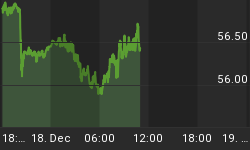Sometimes being fundamentally correct can be monetarily wrong. Too many advisors today espouse their economic views, while disregarding the idea that trends often ignore fundamentals and can last far longer than fundamentals may dictate. By stubbornly holding on to a certain view on the market, investors and/or advisors can either miss out on potential gains or may even give back some of their accumulated profits.
The most glaring example of this has occurred most recently with the US real estate market. First, I believe that real estate prices should not rise in a recessionary environment. Furthermore, with the burst of the dotcom/tech bubble, one would assume that investors would not have the excess equity to upgrade to a bigger home or buy a second home. Nonetheless, the obvious boom in real estate has resulted in tremendous capital appreciation for many real estate investors. This trend has lasted for several years, soaring in the face of fundamental reasoning.
Of course, some would argue that home prices have risen because of artificially low interest rates and interest only loans. I do not disagree with this analysis. In fact, I believe that the real estate market is indeed overvalued. However, I also believe that trends often follow the demand of the investor. In this case, investors decided to take advantage of the low interest rates and "special" mortgage programs. This demand has ultimately led to an increase in home sales, and subsequently a rise in home values.
This idea that trends often ignore fundamental reasoning can be found throughout the markets. The US dollar index is another example of this. I consider myself bearish when it comes to the US dollar. I cannot easily disregard our twin deficits and a slew of other fundamental reasons on why the dollar is overvalued. However, since about June 2003, the dollar has experienced three relatively substantial counter rallies. In fact, we are in the midst of the most prominent of these rallies. Take a look at the below dollar index chart.

One can see that if you would have been short the dollar in 2005, you would have given back most of your gains that you had accrued in 2004. In addition, you most likely missed out on pretty good move up in the US Dollar. Once again, this sizeable move up in the US Dollar index contradicts fundamental reasoning.
I am not here to argue that one should liquidate his/her portfolio and attempt to trade the market based on trends. I do believe that there is value in having a portfolio with long positions that are fundamentally correct. However, I also believe that part of your portfolio should include the opportunity to take advantage of shorter term trends, even if they are contradictory to your other positions.
One of the best ways of accomplishing this is through managed futures. The addition of managed futures can reduce volatility risk in your portfolio and enhance overall returns. For example, if you hold a portfolio that is positioned to take advantage of the decline in the US dollar, the addition of managed futures may help taper the degree of volatility when the dollar experiences a counter rally. Additionally, managed futures can invest in a great number of financial, commodity, and stock index products and markets that are not available with traditional investments. This provides the opportunity for investors to take advantage of market trends in several different sectors and stay diversified globally.
In the last several years, a number of studies have come out detailing the role of managed futures in a typical portfolio. Probably the most recognized study was conducted by Professor John K. Litner of Harvard University. In his paper, "The Potential Role of Managed Commodity-Financial Futures Accounts (and/or Funds) in Portfolios of Stocks and Bonds," Professor Litner wrote:
"the improvements from holding an efficiently-selected portfolio of managed accounts or funds are so large, and the correlation between returns on the futures portfolios and those on the stock and bond portfolios are so low (sometimes even negative), that the return/risk tradeoffs provided by augmented portfolios...clearly dominate the tradeoffs available from portfolio of stocks alone or from a portfolios of stocks and bonds."
The ability of futures to enhance the returns of traditional investments has also been documented in a study conducted by Goldman Sachs. Covering a 25-year period, the study concluded that by "allocating only 10% of a securities portfolio to commodities, investors can vastly improve their performance." Goldman Sachs' conclusion, concerning the value of commodities, was supported by another study published by the Chicago Mercantile Exchange (CME), one of the world's pre-eminent futures exchanges. According to the CME study, "Portfolios with as much as 20% of assets in managed futures yield up to 50% more than a portfolio of stocks and bonds alone."
More clearly, this idea is depicted in the following graph which shows the role that managed futures play in enhancing the return of traditional investments. As you can see when you add managed futures to a traditional portfolio, you are able do decrease your risk while increasing your rate of return.

Another benefit of managed futures is that your account is being traded by a Commodity Trading Advisor (CTA) whose main focus is following market trends. These advisors typically are not swayed by emotion (as some individual investors might be), but rather rely on quantitative trading systems and sophisticated money management strategies.
All in all, whether you decide to use managed futures or whether you decide to follow the trend on your own, be aware that trends often contradict fundamentals. This can help you be monetarily correct when you were fundamentally wrong.















